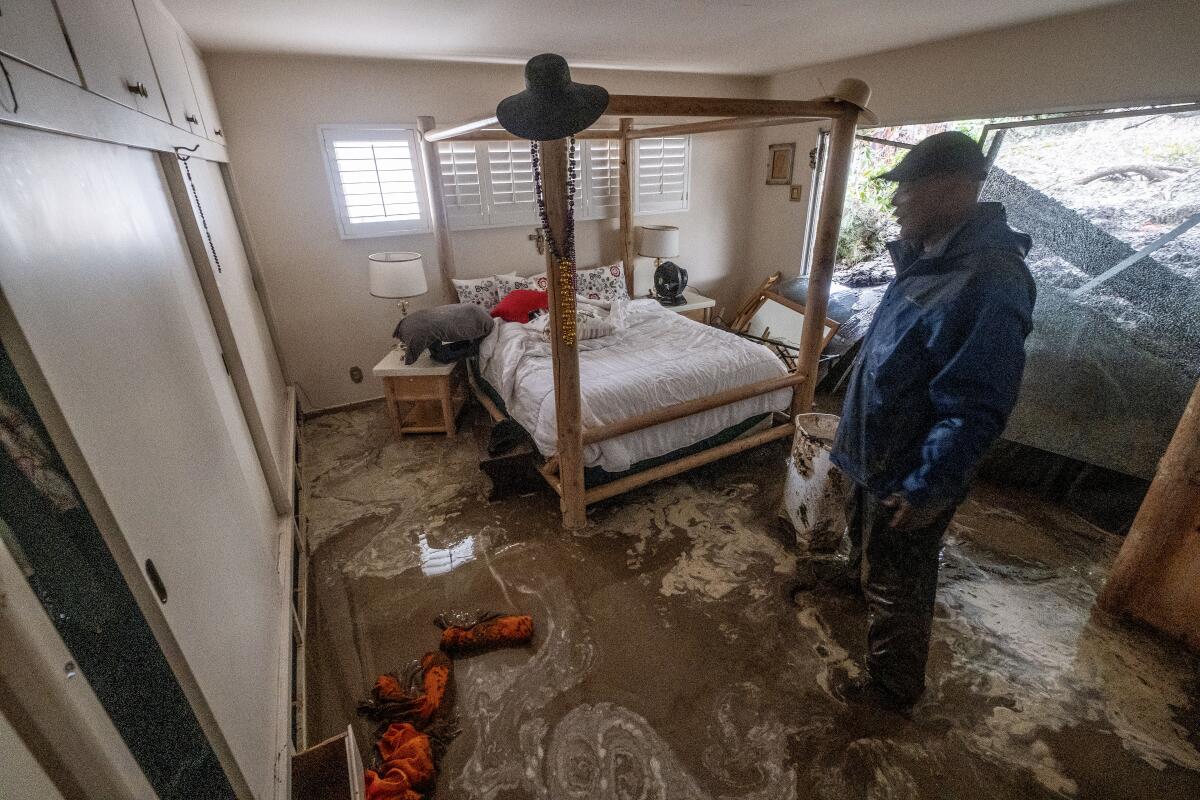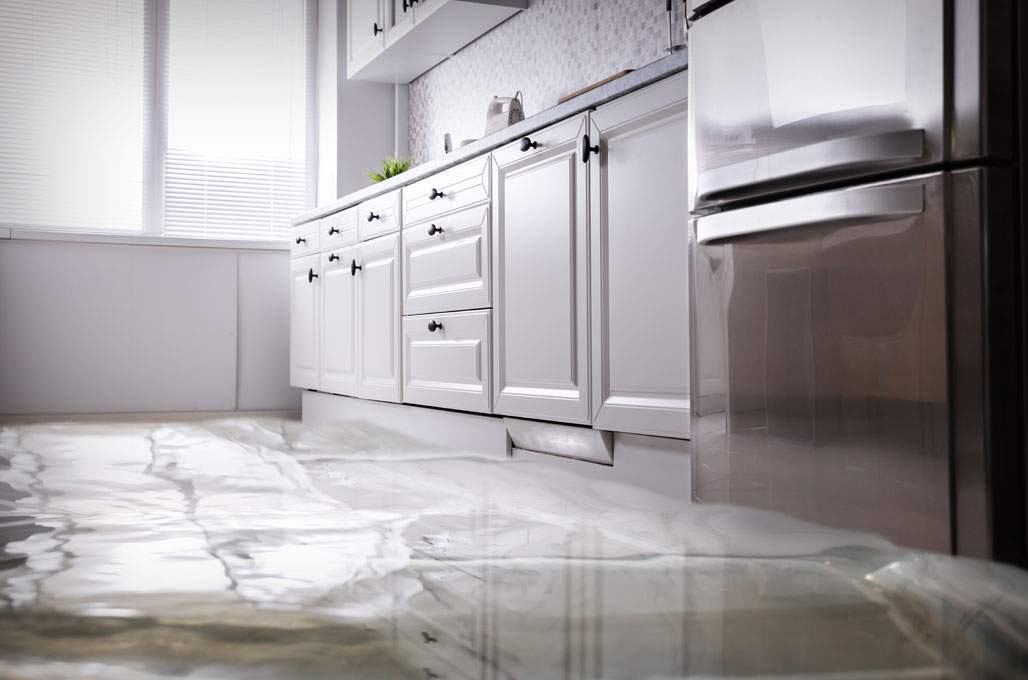Quick Response Emergency Water Leak Repair for Residential and Commercial Needs
Quick Response Emergency Water Leak Repair for Residential and Commercial Needs
Blog Article
The Process of Water Damage Cleaning: Guaranteeing Your Home Is Restored Effectively
Water damage can be a difficult difficulty for home owners, demanding a structured and careful cleanup process to recover safety and security and performance. Initially, a thorough assessment is essential to identify the degree of the damages and figure out the suitable removal procedures. Following this, effective water removal strategies play a critical duty in alleviating further harm. The nuances of drying out, sanitizing, and ultimate remediation are similarly essential and usually forgotten. Comprehending these phases can make a considerable distinction in the outcome of your home's remediation, triggering a closer take a look at what each step entails.
Examining the Damages
Upon uncovering water damages, the very first step is to extensively evaluate the extent of the effect. This initial evaluation is vital, as it helps establish the essential steps for efficient cleaning and repair. Begin by examining the influenced locations, consisting of wall surfaces, ceilings, floors, and personal belongings, to identify the resource of the water intrusion, whether from flooding, leakages, or condensation.
Recording the damages is crucial for both insurance coverage claims and preparing repair efforts - damage restoration services. Use photographs and created notes to record the extent of the damage, noting any affected architectural elements and materials. Pay unique focus to locations that may not be promptly noticeable, such as behind walls and under carpets, as hidden dampness can cause additional complications, including mold growth
In addition, assess the timeline of the water direct exposure. The longer the materials continue to be wet, the better the capacity for damage. Recognizing the period of direct exposure will certainly notify the seriousness of removal efforts. Eventually, a thorough assessment prepares for a successful water damages cleanup process, making certain that all affected locations are attended to successfully and thoroughly.
Water Extraction Methods

Specialists commonly utilize completely submersible pumps for larger quantities of water, which can swiftly alleviate flooding in cellars or various other affected locations. For smaller sized quantities, wet/dry vacuums are typically used to remove residual moisture from carpets and tough surfaces. Furthermore, making use of portable extractors allows for targeted elimination in constrained spaces or locations with delicate products.
In instances of contaminated water, such as sewer or floodwater, progressed extraction methods may include the usage of biohazard tools to make certain safety and security and conformity with health guidelines. High-powered extraction tools are crucial in lessening water retention in architectural products, which can bring about mold and mildew development and structural damage otherwise resolved promptly.
Ultimately, the effectiveness of water extraction methods plays a critical function in the total success of the water damage cleanup process, preparing for succeeding remediation initiatives.
Drying and Dehumidification
When standing water has been properly removed, the following vital phase in the water damages cleanup procedure is drying and dehumidification. This step is vital to avoid more damage and mold development, which can take place within 24 to 48 hours in moist environments.
To accomplish effective drying out, specific tools such as industrial-grade air movers and dehumidifiers is utilized. Air moving companies flow air across wet surface areas, boosting dissipation prices, while dehumidifiers minimize moisture degrees in the air, advertising a favorable atmosphere for drying out. The combination of these devices makes certain that dampness is extracted from wall surfaces, home furnishings, and floors, permitting them to dry completely.
It is essential to keep track of the drying out procedure closely. Professionals usually use wetness meters to evaluate the wetness content in various products, making certain that all impacted locations get to acceptable dryness levels. This precise method helps visit their website to stop covert dampness pockets that might cause structural damage or harmful mold and mildew development.

Cleansing and Sanitizing
After the drying out and dehumidification phase is full, the following essential action in water damage cleanup is cleansing and sanitizing the influenced areas. This process is important to prevent the development of mold and mildew, microorganisms, and other microorganisms that flourish in moist environments.
The cleaning stage typically includes eliminating any type of debris, dirt, and contaminants from surfaces making use of specialized cleaning agents. For hard surface areas, a combination of soap and water or business cleaning items is frequently utilized. Soft products, such as furniture and rugs, may need a lot more substantial cleansing approaches, consisting of vapor cleansing or deep removal strategies, to make certain complete sanitation.

Sanitizing complies with cleansing, utilizing EPA-approved anti-bacterials to get rid of unsafe bacteria. This action is essential, specifically in areas that may have entered call with floodwaters or sewer, as these sources can position serious health threats.
Furthermore, it is necessary to address any type of continuing to be smells, which may call for making use of smell neutralizers or sophisticated methods like ozone treatment. Correct cleaning and sterilizing not just restore the safety and security and hygiene of your home but likewise prepared for effective repair and repairs in succeeding stages of the water damage clean-up process.
Reconstruction and Repairs

Once the assessment is total, remediation efforts can start. Furthermore, flooring may require comparable attention, depending on the degree of water direct exposure.
It is essential to engage seasoned reconstruction specialists during this process, as they have the proficiency to manage complicated repair work successfully. They can aid mitigate potential future problems, such as mold development or architectural instability, therefore making sure a safe and habitable living setting. Inevitably, efficient remediation and fixings bring back the home's integrity and improve its total value.
Conclusion
In verdict, the procedure of water damages cleanup is crucial for restoring a home to its pre-damage problem. Each stage, from evaluating the damage to implementing reliable water extraction techniques, followed by comprehensive drying out, sanitizing, and required repairs, plays an essential role in ensuring safety and compliance with structure standards. Efficient implementation of these actions not just alleviates immediate damages yet likewise boosts the lasting honesty and worth of the building.
Water damages can be a difficult obstacle for house owners, demanding a organized and meticulous cleaning procedure to bring back safety and security and performance. Inevitably, a detailed analysis lays the foundation for an effective water damage cleanup process, making certain that all affected areas are resolved successfully and thoroughly.
Efficient water extraction methods are crucial in mitigating damage and protecting against more difficulties following a water intrusion occasion.In final thought, the process of water damage cleaning is essential for recovering a home to its pre-damage problem. Each phase, from assessing the damages to applying reliable water extraction strategies, complied with by extensive drying out, sterilizing, and required repair services, plays an important function in making sure safety and compliance with building requirements.
Report this page